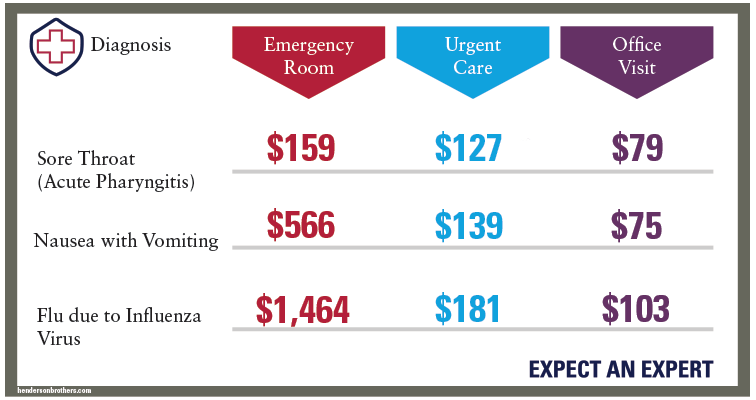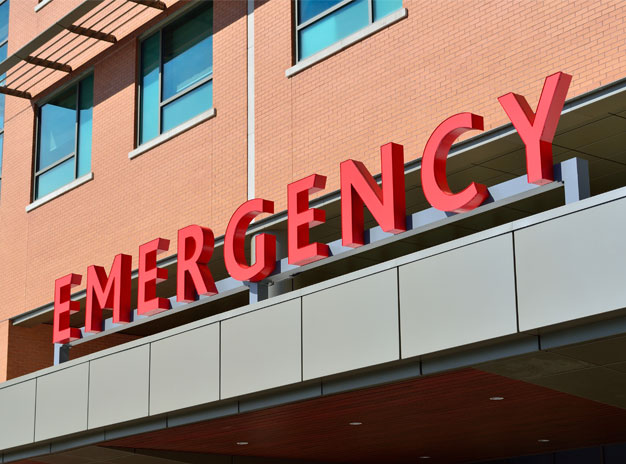After spending the weekend with their toddler nephew, Sarah and her sister, Allison, caught a bad case of the flu. Sarah and Allison are both enrolled in similar employer group health plans that have a deductible for services such as hospital stays, x-rays, and emergency room visits. Now both miserable and awake in the middle of the night, each faced a decision: where could I go now for treatment and relief?
Sarah drove to the nearest emergency room (ER) to seek treatment and obtain medication immediately. Allison decided to visit her nearest urgent care facility; she felt ill enough to go in the middle of the night, but she did not believe it was a real emergency. Sarah and Allison were prescribed medications and were feeling better within a week.
Not too long later, Sarah received a bill for $1,400, while Allison received a bill for $180. How is this possible when both were treated for the same ailment?
The emergency room is equipped to handle life-threatening conditions and illnesses and other serious medical trauma. Emergency rooms prioritize patients on the severity of their condition; this can make wait times much longer for some. The average time from arrival to departure is 2 hours and 15 minutes. Plus, this option for treatment can be very costly. The average emergency room visit cost is $1,423.
View Medline Plus’s comprehensive list of emergencies.
Urgent care centers are designed to address everyday illness and injuries that require timely attention. Urgent care is designed for a much shorter visit time and less expense. According to MedExpress, an average visit is typically under an hour and the average cost is $155.

As you can see from the graphic above, if your condition is not an emergency nor requires immediate attention, it is best to schedule an appointment with your primary care physician (PCP).
Telemedicine has emerged as additional option for many health plans that enable prescriptions over the phone for conditions such as seasonal allergies, a sore throat, or the flu.
If you are unsure what to do
If you are not sure where to go, you may have the option of calling a hotline through your health insurance company. Most companies provide a hotline to help their customers.
In Pennsylvania, West Virginia, and Ohio, UPMC provides a MyHealth 24/7 Nurse Line. Call with health-related questions at 866-918-1591; have your member ID card ready.
Highmark’s Blues on Call Health Coach is a toll-free connection for members to call regarding health information, support, and confidential health counseling with a specially-trained registered nurse.
Sources:
Debt.org: Emergency Rooms vs. Urgent Care Centers
Medlineplus.gov: When to use the emergency room- adult
MedExpress: MedExpress or emergency room?
Prevention.com: 10 Symptoms That Warrant a Trip To The ER
Please note that the information contained in this posting is designed to provide authoritative and accurate information, in regard to the subject matter covered. However, it is not provided as legal or tax advice and no representation is made as to the sufficiency for your specific company’s needs. This post should be reviewed by your legal counsel or tax consultant before use.


